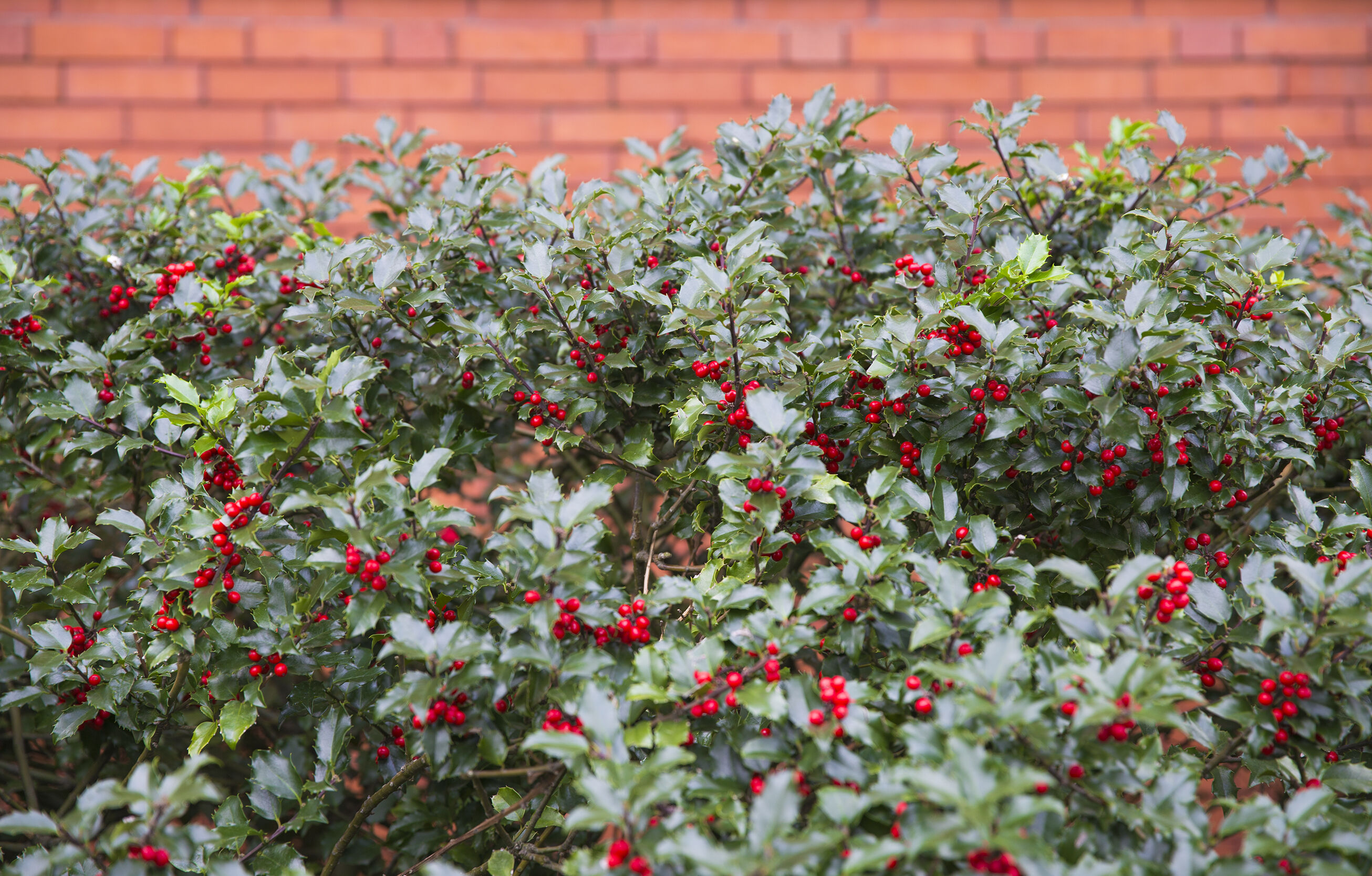
Karen, “Somewhere in Southern Maryland,” writes:
“Last year, our holly bushes were attacked by aphids or mites that left them full of black gunk. We treated them with neem oil and that seems to have solved that issue. Now we realize that the bushes are in need of a major trim. We read that we should wait until they go dormant in the winter, but our winter was pretty mild and they never really went dormant. When would it be safe to give the bushes a major trim?”
Pretty much the same time it’s safe to put tomatoes out, Karen — anytime around or after May 15, when the 10-day forecast shows nighttime temps consistently in the 50s or high 40s. You do not want to prune during a warm spell with freezing nights to follow.
Holly! Go lightly on that pruning!
Karen in (quote) “Southern Maryland” wants to give her hollies a major trim.
Good news, Karen — hollies can take what’s called a “rejuvenation pruning” without harm, although they’ll look their best if you remove around 30% of each plant a year for several years in a row instead of doing the Texas Chainsaw Massacre thing all at once.
And get your timing right! Pruning during warm weather always stimulates growth. But if that warm spell is followed by freezing weather, that new growth can freeze hard — and then all bets are off. Yes, it’s been warm lately, but Sunday night will drop below freezing in the burbs. So be smart: Wait until May and even then, check the 10-day forecast before you prune away.
Prune on the plants’ schedule — not yours!
Karen’s pruning question leads us to repeat the rules of pruning.
- Prune nothing now, especially if you are bored
- Prune Spring bloomers like forsythia, flowering cherries, lilacs, azaleas and rhododendrons right after they finish blooming. You can give them another trim a month or so later but that’s it, because then they’ll be forming their buds for next Spring
- Prune summer bloomers like roses around the same time you plant your tomatoes. Prune off any dead or damaged canes, remove the prunings and any old mulch and then mulch with compost to prevent disease
- Cut summer-blooming plants like butterfly bush back hard in May to keep them shapely.
- Prune late bloomers like crepe myrtle in May as well, but only take off the previous year’s growth. Do not commit “crepe murder!”
It’s corn gluten time!
Gil in Gainesville writes:
“Spring is around the corner and I always wonder about when it’s a good time to do a crabgrass prevention treatment on my lawn. Is now a good time to apply? And can you advise me on the most effective product to use?”
The classic natural pre-emergent is corn gluten meal, Gil. A by-product of cornstarch production, corn gluten meal is 10% nitrogen, which gives your turf a perfect spring feeding. At amounts that deliver 20 pounds of corn gluten meal per thousand square feet of turf, the product also prevents germination of weed seeds, but that amount is technically disallowed under Maryland and Virginia’s lawn care laws. So apply 10 pounds now and another 10 pounds in a month. That should be effective — and it’s legal.
Soil temp resources
Joe in Derwood writes:
“Can you provide the website links that show our current soil temperature? I want to be prepared to spread corn gluten meal.”
Absolutely, Joe — I’ll supply the link to the Department of Agriculture’s soil probe at Powder Mill Maryland, which is currently hovering around 50 degrees at the classic four inches deep; and as you probably know, the magic number is 55.
But because this has been such an historically mild winter, I would start now. Put down 10 pounds of corn gluten meal per thousand square feet of turf this weekend and then follow that with another 10 pounds in a month. That’ll give your lawn a great spring feeding and prevent the seeds of annual weeds like crabgrass from successfully sprouting.
Website special: Lawn care laws and physical reality
The bar shifted in favor of nontoxic lawn care in the ’90s when Dr. Nick Christians discovered that “corn gluten meal” (a by-product of cornstarch manufacture) was an excellent lawn fertilizer and — at rates of application high enough — would also prevent the germination of weed seeds like crabgrass. Bingo — organic weed and feed!
Then, beginning about a decade ago, Maryland and Virginia adopted new “lawn care laws” designed to protect the Chesapeake Bay from nutrient pollution from agricultural fertilizers. As a result, homeowners are forbidden to use nitrogen fertilizers that provide more than 10 pounds of that nutrient per thousand square feet of turf; and are forbidden to use fertilizers containing phosphorus — a nasty actor in Bay pollution.
But the law made no distinction between natural products like corn gluten meal, which are extremely “slow release” and “conventional” fertilizers made from highly explosive chemical salts that get into waterways super fast.
That puts me in a tight corner. I’d like to say “go ahead and apply 20 pounds of corn gluten meal all at once because there’s no way it can impact the Bay.” But I would make myself and the station liable if I did so, and that’s why I’m suggesting 10 and 10 this year. It meets the letter of the law and should give you a great looking lawn.
Oh — and if you see stores selling lawn fertilizers with a first NPK label number (nitrogen) greater than 10, PLEASE dime them out to your state agencies. Same if there is any number in second place (phosphorus) on the label. These products do harm the Bay.
Just saying…
Mike McGrath was Editor-in-Chief of ORGANIC GARDENING magazine from 1990 through 1997. He has been the host of the nationally syndicated Public Radio show “You Bet Your Garden” since 1998 and Garden Editor for WTOP since 1999. Send him your garden or pest control questions at MikeMcG@PTD.net.







